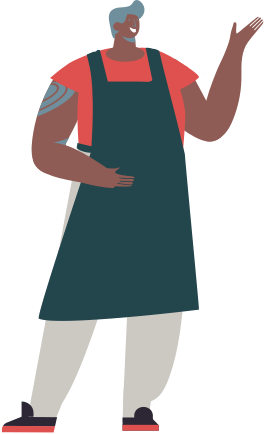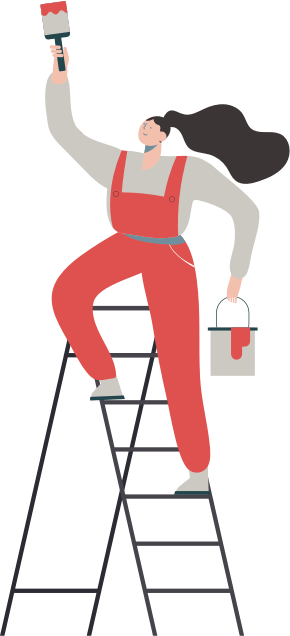Hurt At Work?
What qualifies as a workplace injury?
A work injury is the result of any work-related event that causes a need for medical treatment and/or time away from work. The Workers’ Compensation Board considers each work injury on an individual basis, but in most cases, compensation would apply to injuries that occur while a worker is at work, on company premises or on company business. This includes an occupational disease caused by work.
What is the Workers’ Compensation Board (WCB)?
The Workers’ Compensation Board (WCB) is an independent agency that manages Saskatchewan’s workers’ compensation system. The WCB operates under a provincial law known as The Workers’ Compensation Act, 2013. The WCB is governed by a Board made up of a Chair and Board members who represent workers and employers. They make sure that WCB policies follow the Act and they consider appeals. A chief executive officer manages the WCB’s day-to-day operations.
Workers’ compensation is an insurance system for workplace injuries funded by employers. It’s a no-fault system. This means that fault doesn’t have to be proven for injured workers to get benefits. Injured workers get the financial help and medical treatment they need. They don’t have to pay for these benefits themselves or sue their employers to get them.
Can my employer and I agree to not report my injury?
No. You and your employer are required legally to report to the WCB all injuries that need medical attention even if you don’t miss any time from work. Any agreement to not report an injury is illegal. Care providers are also required to report every work injury they treat to the WCB.
Three things you must do immediately if you are injured at work:
- Get medical attention immediately, your employer must provide appropriate first aid if available or arrange transportation to the nearest health care facility so you can receive treatment from a qualified health care professional.
- Report your injury to your employer, let your employer know about the incident as soon as you are able, within hours if possible. Begin to discuss a personalized return to work or modified work plan if necessary.
- Report your injury to the WCB by completing the W1 form.
The form can be found and filled out online here.
A printable copy of the form can be found here.
Please send completed forms by mail to:
200-1881 Scarth Street
Regina, SK S4P 4L1
You can also fill out the form by contacting the WCB by phone at:
1.800.787.9288 and a WCB representative will take your information and complete the form for you.
The WCB offers translation services for folks that have English as an additional language, this service is offered over the phone. Notify the WCB as soon as you speak with a case manager that you would prefer to correspond with them in a language other than English.
W1 Forms
What is a W1 Form?
What you need to fill out a W1 form
- Your birth date
- Your social insurance number
- Your provincial health services card number
- Your employer’s name, address and phone number
- The name of the health care provider who is treating your injury
W1 Process (See W1 form)
Create an online account on the WCB website, this will allow you to review forms you have submitted, view your payments, submit appeals and update your personal information.
You can create an online account here: https://myaccount.wcbsask.com/online-services/account-registration
To create an online account, you will need:
- a valid email address (the WCB may communicate with you through the email address you used to create your account, remember to check it regularly!)
Prompts
- The WCB online account page will first ask you to accept a disclaimer.
- Account type: select injured worker (allows you to submit and view claim information)
- Account info:
- you will need your social insurance number or if you are a in Canada on a work permit your work permit issued by Immigration, Refugee and Citizenship Canada (IRCC) or Citizenship and Immigration Canada (CIC)
- you can fill out your provincial health services card number on the second line (see below for image of a Saskatchewan provincial health card)
- list your date of birth in the format year, month, day.
- Contact information
- provide a valid email address (the WCB will contact you using this email address, check it regularly)
- create a password for your account
- enter your first and last name
- enter at least one phone number
After submitting your W1 form online, over the phone or mailed in copy the claim will be processed by the WCB. You will be contacted by a case manager, the process is cooperative and involves you, your employer, the WCB and your health care provider(s).
What are the benefits for injured workers?
Benefits for workers are provided on a case by case basis to meet the individual needs of the injured worker, below is some general information about the benefits the WCB provides for injured workers.
Medical Costs: The WCB may pay prescription drug costs, hospital care and medical supplies. The WCB has accredited psychologists that assist and treat workers with mental health issues that are a result of a workplace injury. Injured workers can choose to receive medical treatment from any health care professional who is licensed to practice in Saskatchewan. The WCB offer decentralized, timely and coordinated health care for injured workers, using a network of assessment teams and treatment centres around the province. All medical and hospital costs associated with the injury are paid directly by us. This includes artificial limbs, braces and orthopedic and prosthetic aids. If the injured worker incurs out-of-pocket expenses for prescriptions and other medical supplies prescribed by his or her health care professional, we will pay when the original receipts are submitted with the worker’s claim number.
Travel Expenses: The WCB may cover travel costs for the injured worker if they must travel outside of their home community for medical treatment.
Out-Of-Province Travel: We pay appropriate travel and living expenses if out-of-pocket expenses are incurred to receive treatment out-of-province. The worker should get approval from their Case Manager before leaving the province, to ensure compensation benefits are continued. Out-of-province treatment is paid for at Saskatchewan rates, except in special circumstances.
Wage Loss Benefits: Wage loss benefits are paid if the worker is unable to return to work because of their injury for any duration after the day of the injury.
For workers 63 years or older, wage-loss benefits can only be paid for a maximum of two years from the date those wage-loss benefits begin, provided the worker is unable to earn all or part of their earnings because of their injury. Medical confirmation is required.
Rehabilitation: If a worker cannot return to the previous job because of work restrictions caused by the injury, we may pay for alterations to the worker’s home, vehicle or workplace to reduce or offset those restrictions and enable a return to work. Career counselling, job search and job training may also be provided.
Permanent Functional Impairment Benefits (PFI): If a work injury leaves part of the worker’s body not functioning as it did before the injury, they may have a permanent functional impairment (PFI) and be eligible for a lump sum payment. Injured workers with a permanent functional impairment (PFI) can get an annual independence allowance to help them live independently. This allowance is a percentage of the permanent functional impairment award.
Workers 65 years or older: Workers 65 years of age or older on your payroll are covered and entitled to benefits if injured. Most benefits will continue if required by the injury, regardless of the worker’s age. The only restriction is wage-loss benefits.
Death benefits: When a worker dies at work, or is found dead in the workplace, in an area where the worker had a right to be in the course of his or her employment, it is presumed that the death was work-related unless it is proved otherwise. The deceased worker’s family may be entitled to expenses related to the death of the worker, including burial and benefits for a limited time:
Expenses related to the death of the worker, including burial: a lump sum payment to the worker’s estate to help pay funeral expenses.
Spousal benefits: wage-loss benefits, vocational benefits, retirement benefits and benefits for dependent children.
A deceased worker’s spouse may be entitled to the same employment services available to an injured worker. This includes:
- Vocational counselling, and
- Career assessment and planning, including tuition, books, fees and other expenses while in an approved training program.
What to expect
There are generally two streams of worker injury claims accepted by the WCB, time loss or no-time loss injury claims.
Time Loss Cases
Time loss cases are cases where the injured worker cannot safely return to work the day after the injury occurred.
The WCB gathers information from you, your employer and care provider to validate your claim. The WCB communicates with you and your employer advising you whether your claim is accepted or denied.
You send receipts to the WCB for medical items, prescriptions and travel expenses you have because of your injury.
The WCB receives the receipts and issues a payment to you as soon as possible. The WCB sends your first wage-loss payment within 14 days with letters to you and your employer explaining action on your claim. The WCB pays your care provider for their services.
You continue to send your receipts for medical items, prescriptions and travel expenses to the WCB. The WCB issues payments to you for allowable medical and travel expenses. The WCB continues to pay your wage-loss benefits every two weeks until you are back to work. The WCB continues to pay your care provider for their services.
The WCB reviews your medical treatment and fitness for employment. You, your employer, care provider and the WCB plan your return to work. If your recovery exceeds expected durations, or is serious in nature, your claim is reassessed as long term and your claim is assigned to a case management team. You maintain contact with your employer, care provider and WCB case manager. The WCB keeps you, your employer and care provider informed by letter about the status of your claim.
No Time loss
The WCB gathers information from you, your employer and care provider to validate your claim. The WCB communicates with you and your employer advising you whether your claim is accepted or denied. You send receipts to the WCB for medical items, prescriptions and travel expenses you have because of your injury. The WCB receives the receipts and issues payment to you for allowable expenses.
Recovering and Returning to Work
Studies have shown that return to work plans improve the outcomes for injured workers, workers who return to work as soon as it is determined medically safe have the greatest rates of positive outcomes after a workplace injury.
What is a return to work plan?
A Return to Work (RTW) program is a proactive, formal plan that helps injured workers remain at work or safely return to suitable work. It outlines the steps that workers, supervisors, and others within the organization need to take if an injury occurs. WCB return to work plans are a cooperative endeavour that include the injured worker, employer, WCB representative and required health care professionals. This cooperative approach creates individual RTW programs that are tailored to each case and significantly increase the recovery and return to regular duties if possible, for each injured worker.


